The Ultimate Guide To Exploring Iceland's Volcanoes

The Ultimate Guide To Exploring Iceland's Volcanoes
Despite Iceland’s reputation as an icy cold, snow-covered country, many deceitfully peaceful spots are, in fact, masking a pool of glowing hot lava just beneath the surface. This unique geological diversity makes Iceland a firm favourite amongst travellers from around the world looking to explore and learn more about volcanoes and the geological conditions they create.
Since volcanoes and volcanic activity are such a big part of Iceland, responsible for attracting a large proportion of visitors each year, we have created this ultimate guide to exploring Iceland’s volcanoes so that you can plan your trip safe in the knowledge that you know everything there is to know about these giant geological beats and how to best experience them.
What are volcanoes?
The official definition of a volcano is a rupture or crack in the crust of the Earth that allows lava/magma, gases, ash, and other substances to spew out of. Because volcanoes are typically found where the Earth’s tectonic plates meet, the majority are found underneath the sea.
Volcanoes are categorised into the following types based upon their shape and make up: cone, shield, and composite.
While most of the volcanoes in Iceland are active, it is important to stress that this does not mean they are dangerous. Each volcano will have a set of rules to follow when exploring, and it is important to do so to ensure the safety of yourself as well as others.
As well as the volcanoes themselves, many of Iceland’s most popular attractions exist as a direct result of volcanic activity including geysers, hot springs, cliffs, caves, and much more.
How many volcanoes are there in Iceland?
Despite its small size, Iceland is home to around 130 volcanoes.
Not all of Iceland’s volcanoes are active, with the Westfjords area being the only part of the island without an active volcano system, having been formed some 16 million years ago. As a result, it is the only place in Iceland that relies on electricity to heat water as opposed to geothermal energy like the rest of the island.
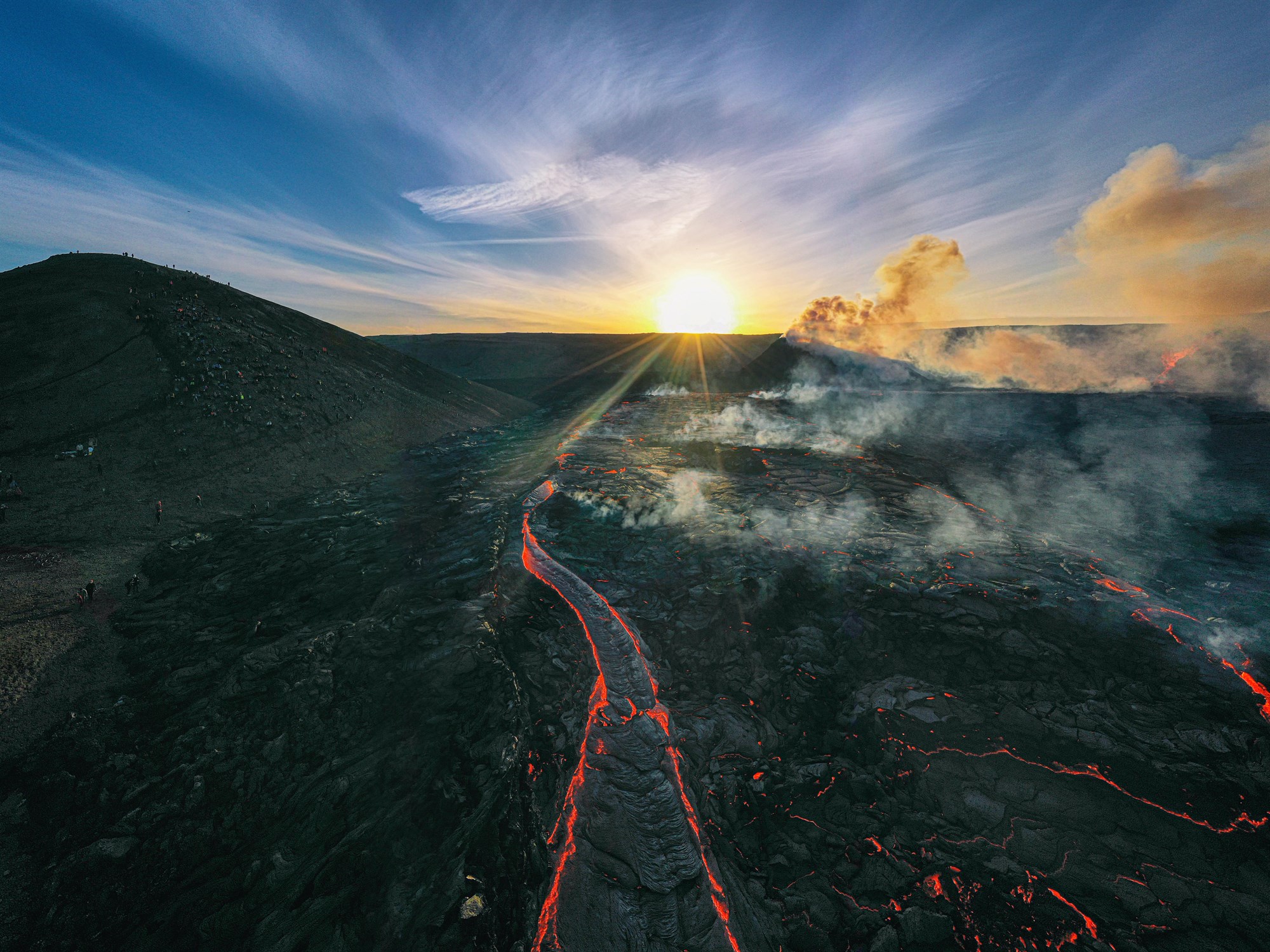
The most famous active volcano in Iceland is Hekla in the South West, which has erupted over 20 times since 1104. Katla is also a famous active volcano on the Icelandic peninsula, erupting on average twice every century. Overall, Iceland sees eruptions on average around every 5 years, with some lasting just a few days, and others violently bubbling away for several months demonstrating just how unpredictable these geological juggernauts can be.
How many active volcanoes are there in Iceland?
Iceland is home to around 30 active volcano systems underneath its icy surface, although fear not; active does not mean they are likely to erupt on your trip!
Why is Iceland so volcanic?
The reason for so many volcanoes in such a relatively small area is due to Iceland’s unique location on the Mid Atlantic Ridge which separates the North American and Eurasian tectonic plates.
Tectonic plates are large pieces of the Earth’s crust in the lithosphere area that are not fused together, allowing extremely hot substances to rise from within. As these plates are divergent at the rate of 2.5 centimeters each year, meaning they are pushing away from one another, this forces the flow of magma from the mantle to the Earth’s surface.
These volatile geological foundations are responsible for creating the necessary conditions for volcanoes to form so freely in Iceland. Coincidentally, the rift caused by the two giant tectonic plates cuts almost directly down the centre of the country. If you are interested in exploring this phenomenon known as the Silfra Fissure, be sure to visit the Þingvellir National Park along Iceland’s Golden Circle where you can scuba dive and snorkel in the rift between the two plates for a once in a lifetime experience!
How often do volcanoes erupt in Iceland?
Because volcanic eruptions are unpredictable, it is hard to say exactly how often they occur in Iceland, although one thing we can say for certain is that they appear relatively regularly in this part of the world. Over the past 200 years, there has been at least one volcanic eruption in Iceland each decade.
The latest eruption occurred in March 2021 at the site of Fagradalsfjall volcano in the Reykjanes Peninsula, the land connecting Reykjavik with Keflavik International Airport. In the weeks leading up to the eruption, the capital and surrounding areas experienced thousands of earthquakes - often a sign of impending volcanic activity. Despite the Reykjanes Peninsula being a densely populated area of the country, the volcano is conveniently located in a sheltered valley away from any settlements or infrastructure, making its eruption surprisingly undisruptive. In addition to this, Fagradalsfjall is an effusive rather than eruptive volcano, meaning that lava has come oozing and spluttering out of the Earth as opposed to exploding with a dramatic eruption of ash, fire, and rock.
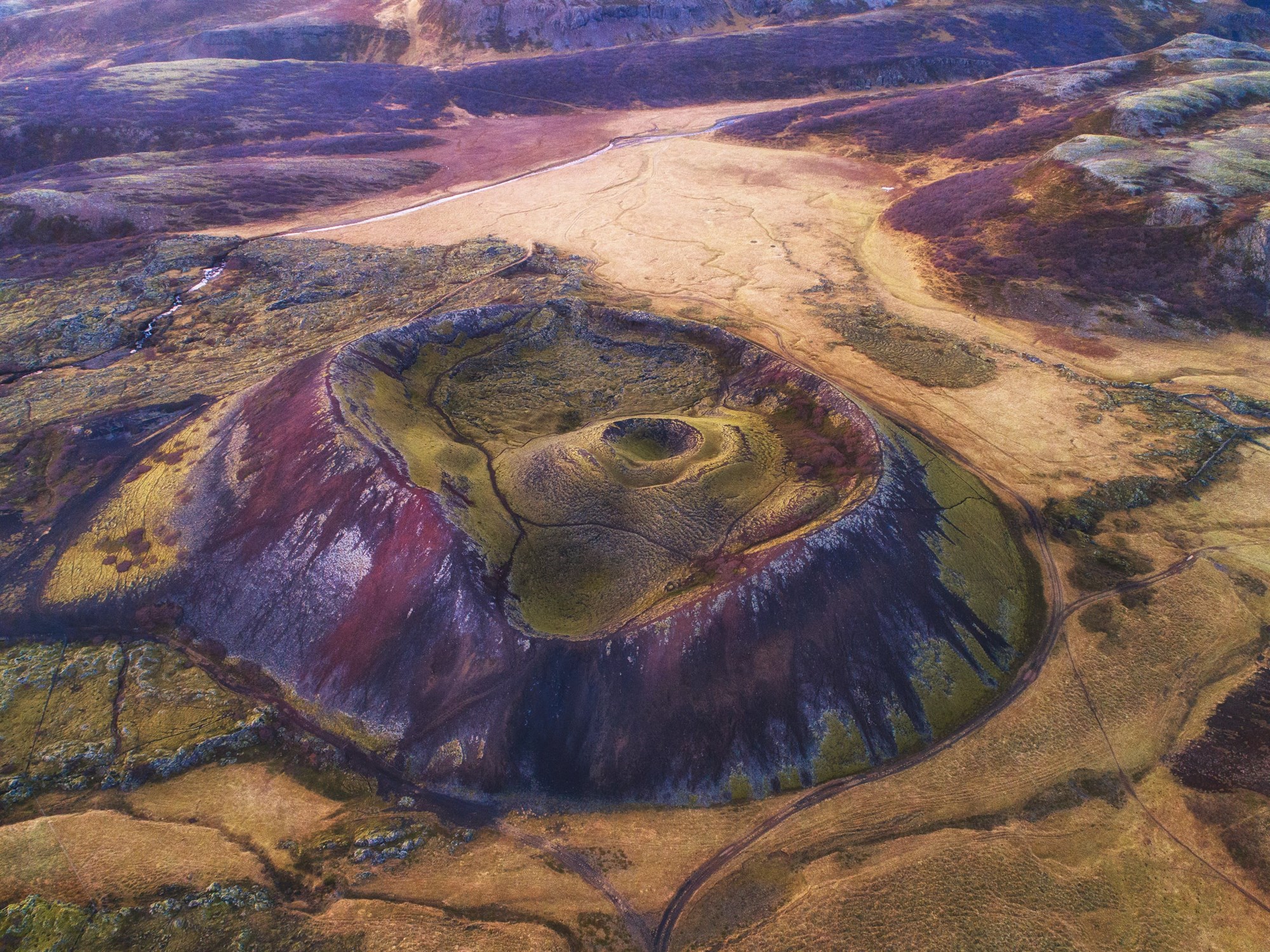
Perhaps the most famous of Iceland’s recent volcanic eruptions came in 2010 when a major eruption at Eyjafjallajökull sent a huge cloud of ash into the air, spreading across the UK and continental Europe, grounding hundreds of flights in the process and sending the airline industry into chaos.
Scientists suspect that many more eruptions occur in addition to the eruptions of which we are aware, but they cannot be completely sure because many do not break the frozen seals that have formed over the craters.
Are Iceland’s volcanoes dangerous?
While volcanoes can be dangerous and it is important to be cautious when exploring, the threat to human life should an eruption occur in Iceland nowadays is minimal.
Given the fact there are so many active volcanoes in Iceland, you can forgive Icelanders for having a small bit of fear in the back of their minds. Even if they live far away from any eruption, there is still a real possibility that their homes could become engulfed in soot and ash. Prior to globalisation, there was also a very real possibility that a famine would occur following a major eruption.
Nowadays, the three biggest dangers that come with volcanic eruptions in Iceland are ash clouds, lava fields, and flooding. The nature of the eruption will dictate which of these factors is most dangerous, although it is extremely unlikely you will experience any danger as a result of a volcanic eruption during your visit to Iceland.
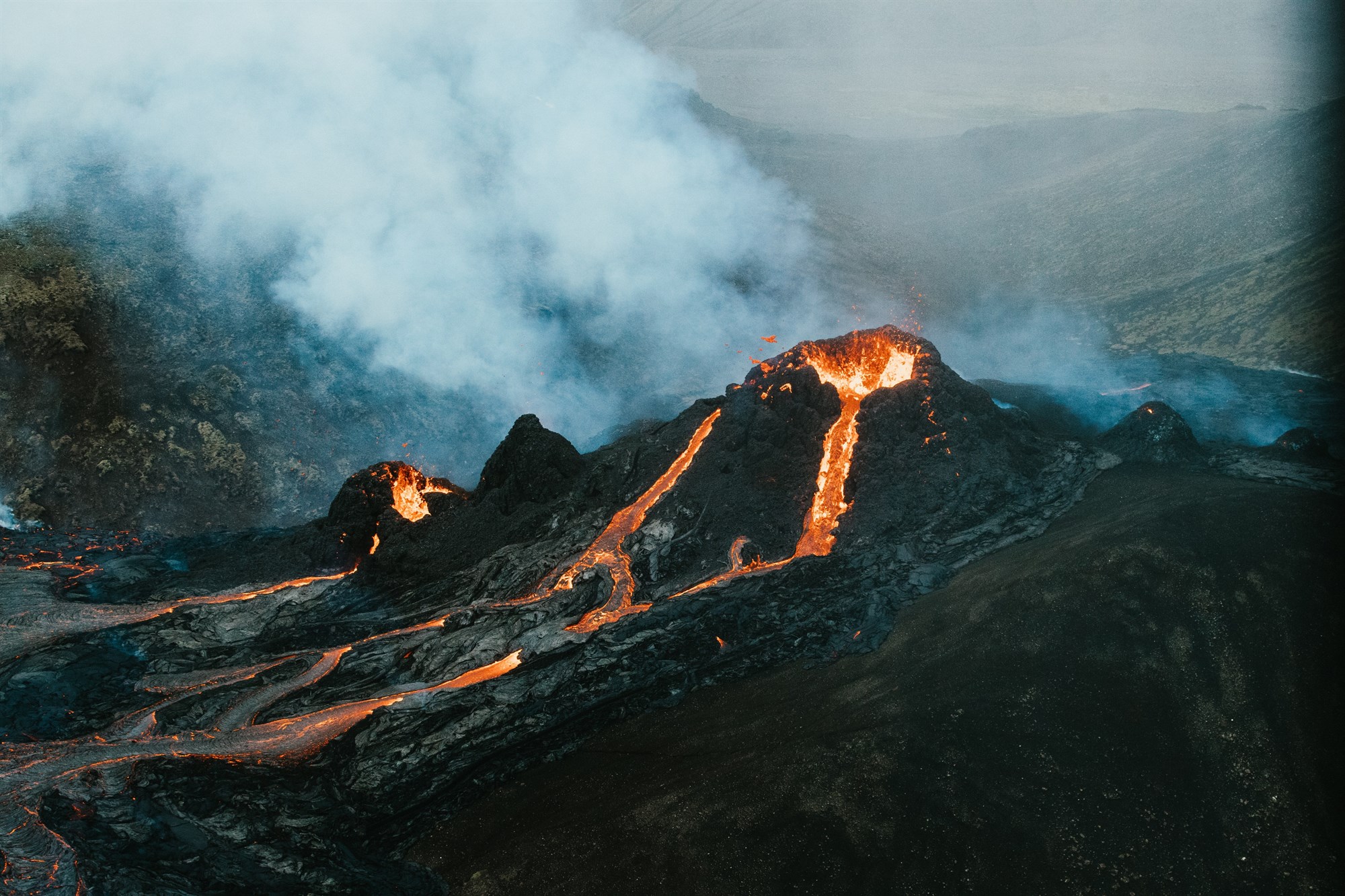
The worst volcanic eruption that occurred in Iceland was the eruption of Laki in 1783 that lasted a whole eight months and sent so much ash into the atmosphere that it caused a haze that extended as far as the Middle East. This devastating eruption destroyed a large proportion of the country’s food reserves and livestock, with over a quarter of the country’s population dying of famine. The eruption of Laki will forever be remembered as one of Iceland’s greatest ever tragedies and acts as a stark reminder of just how dangerous volcanoes can be.
Iceland’s most famous volcanoes
With over 130 volcanoes to choose from in Iceland, it can be hard to know which ones to explore first. To help you out, we have selected a few that you simply cannot afford to miss if you are in the area.
Eyjafjallajökull
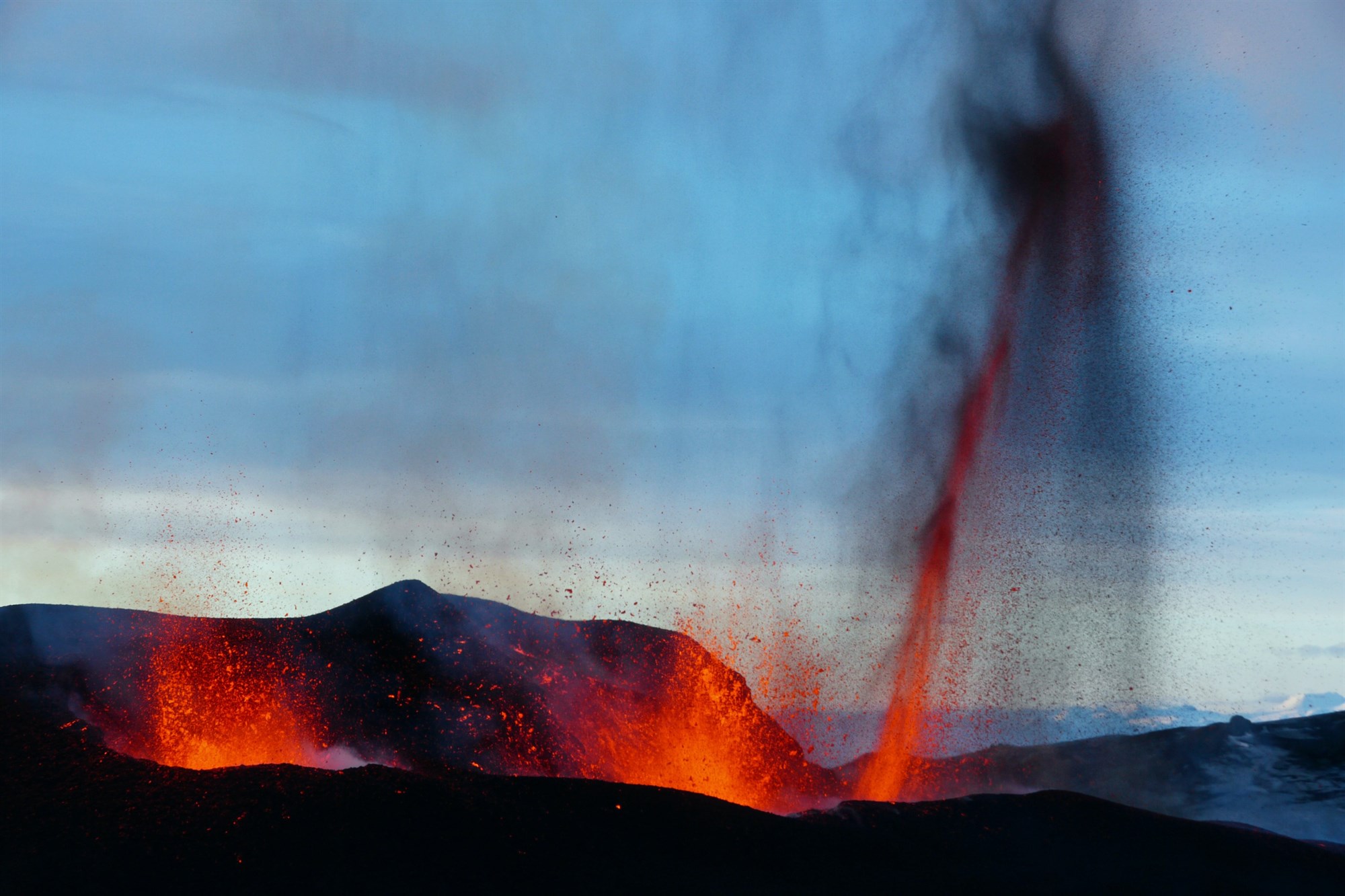
Location: Suðurland
Status: Active
Last eruption: April 2010
Eyjafjallajökull is the volcano responsible for bringing European air travel to a standstill back in 2010. Thankfully, only the airline’s profits were compromised, and the eruption didn’t cause any harm to humans or animals.
Katla

Location: Vík í Mýrdal
Status: Active
Last eruption: 1918
Katla is a large volcano in Southern Iceland that many scientists believe is on the verge of a significant eruption. Since it’s last major eruption in 1918, it has only experienced minor volcanic activity that hasn’t been potent enough to shift the icy surface covering the impressive landmark
Grimsvotn Volcano System
Location: South East Iceland
Status: Active
Last eruption: 2011
The Grimsvotn Volcano System is, rather ominously, the most actively erupting volcano in the country. The deadly Laki volcano that erupted in 1783 was part of this system. The danger surrounding Grimsvotn is the ash that arises from the eruption which can be harmful as it settles or when people breathe it in.
Hekla/Hecla
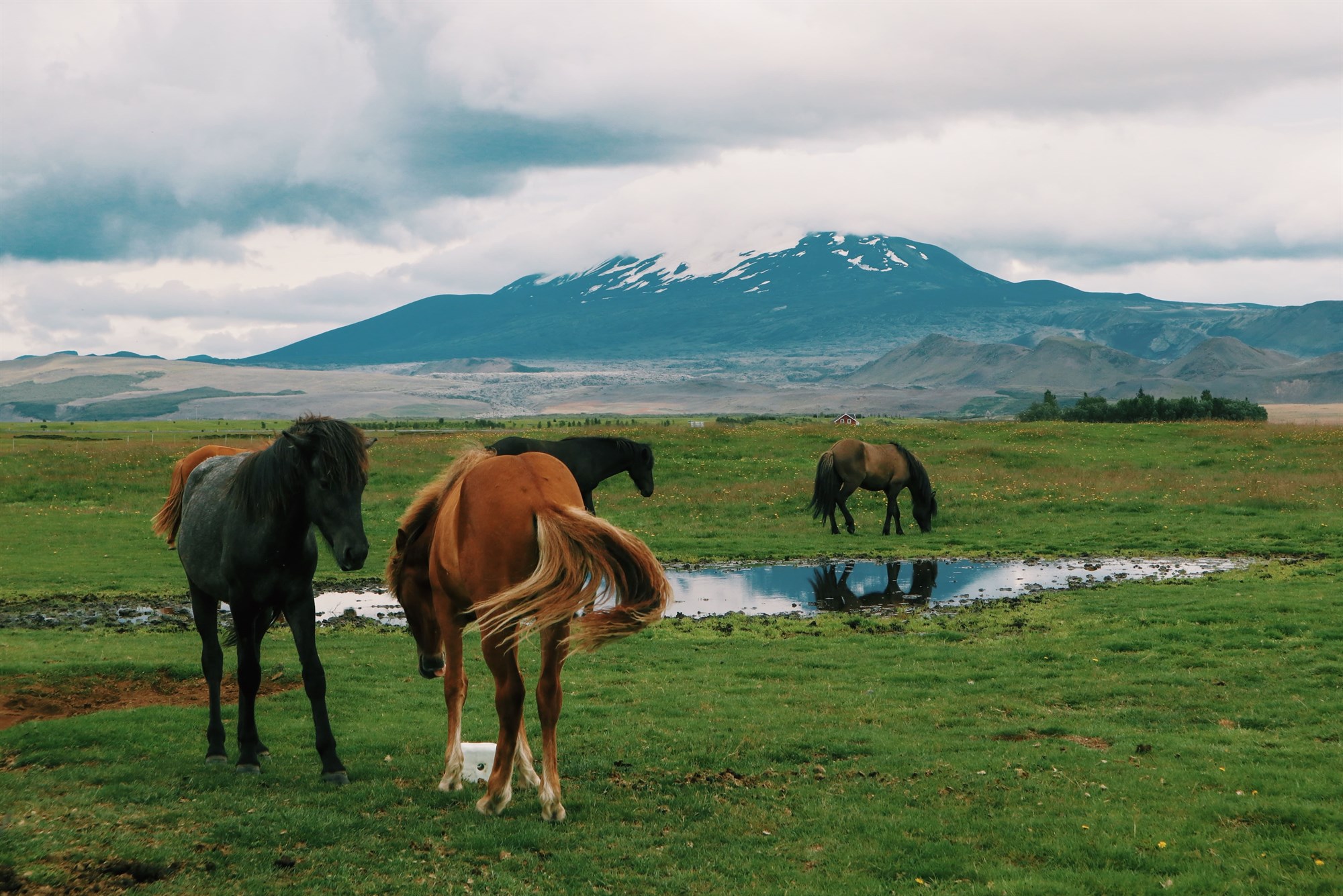
Location: Southern Iceland
Status: Active
Last eruption: 2000
Nicknamed the “Gateway to Hell”, Hekla is known for its dramatic explosive eruptions that spew tons of hot lava out from its vent and onto the surrounding terrain. The danger with Hekla is it is hard to predict when it will erupt next, and damaging effects of a major eruption in 1845 that wiped out a large portion of the local livestock serve as a reminder of how devastating volcanoes can be.
Hverfjall/Hverfell
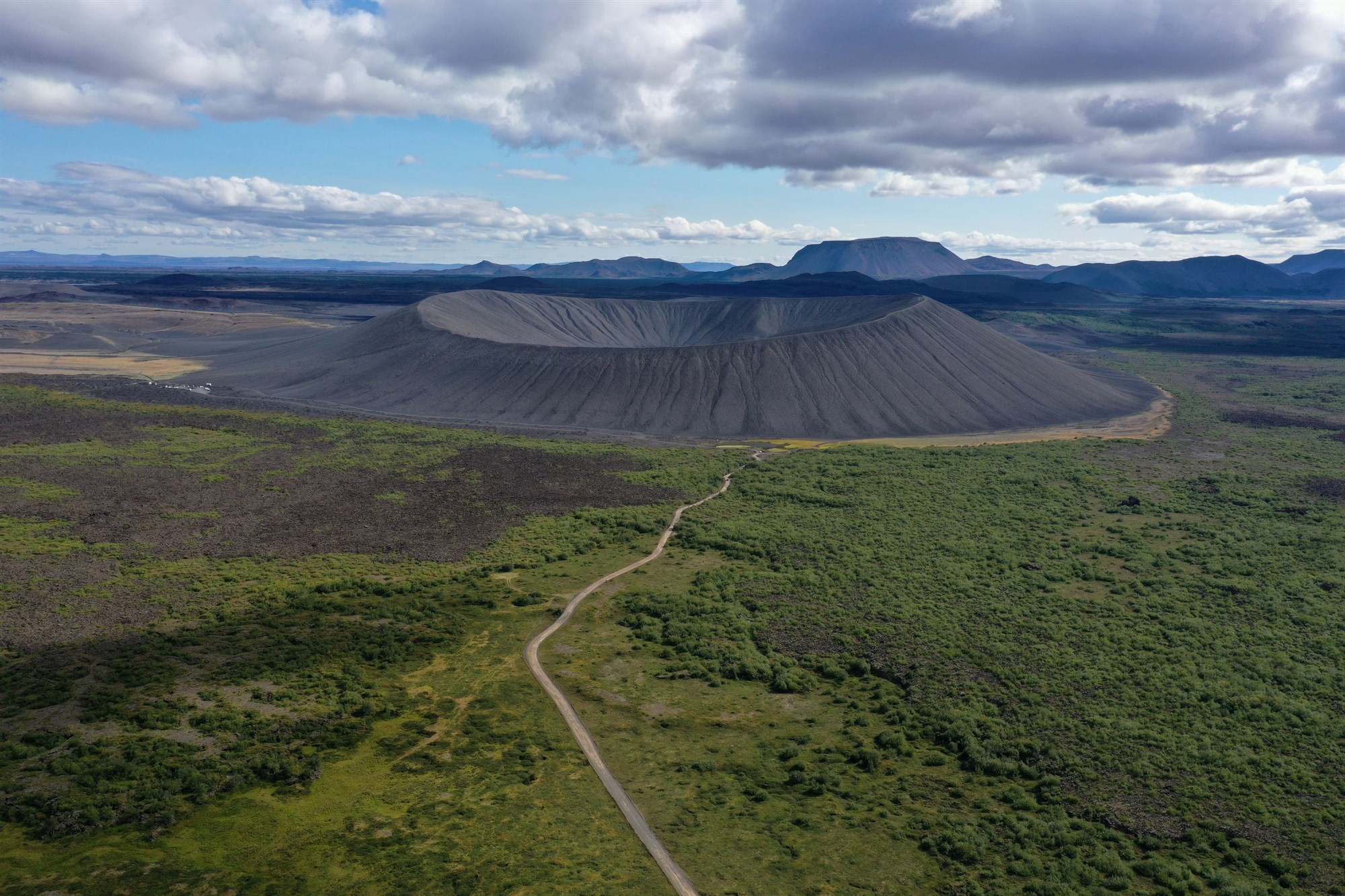
Location: Mývatn
Status: Dormant
Last eruption: 2500 BP
The sleeping giant of Hverfjall hasn’t erupted in over 4500 years, despite the regular volcanic activity from its neighbours. Accessible via the Ring Road, the gradual slopes leading up to the summit of this volcano make it a rewarding challenge for hikers of all experience levels.
Snæfellsjökull
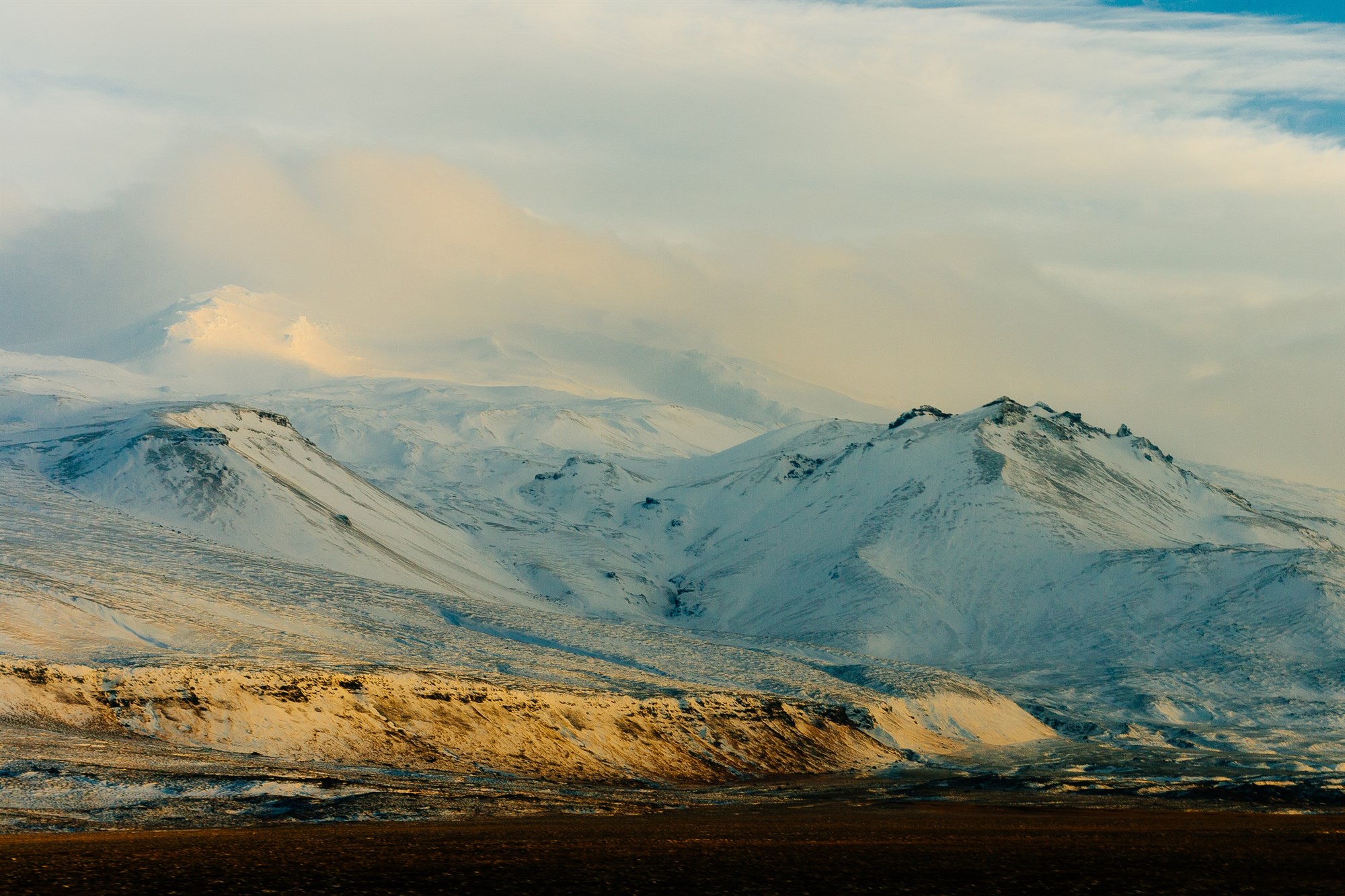
Location: Snæfellsnes Peninsula
Status: Active
Last eruption: 200 CE ± 150 years
Nicknamed the ‘Door To The Centre Of The Earth’ and shrouded in unproven theories of paranormal activity and alien invasions, Snæfellsjökull is often mooted as Iceland’s most beautiful volcanoes and is understandably very popular among visitors.
Askja

Location: Dyngjufjöll Mountains
Status: Active
Last eruption: 1961
This peaceful looking geothermal lake that remains frozen for the majority of the year was the centre of a devastating eruption in 1875 which poisoned the surrounding land and destroyed the majority of the local people’s food supply, leading to many of them having to move to North America to start new lives.
Krafla
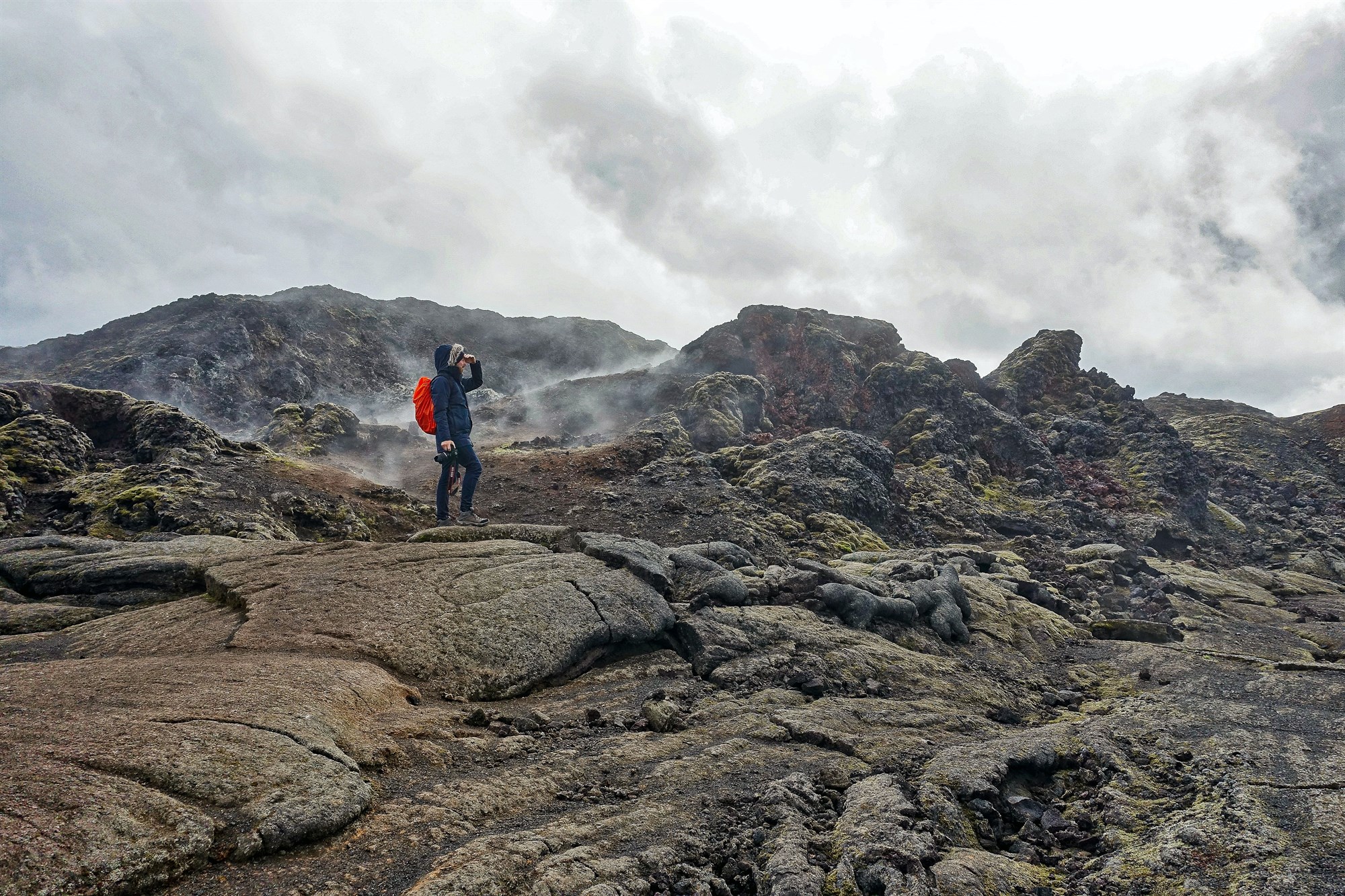
Location: Mývatn
Status: Active
Last eruption: 1984
Located in the North of Iceland, Krafla is well known for its stunning blue crater lake. Despite its natural beauty, Krafla is still active and has seen 29 recorded eruptions since the 9th century. The volcano is popular among visitors due to its close proximity to other popular tourist attractions in Iceland.
Þríhnúkagígur
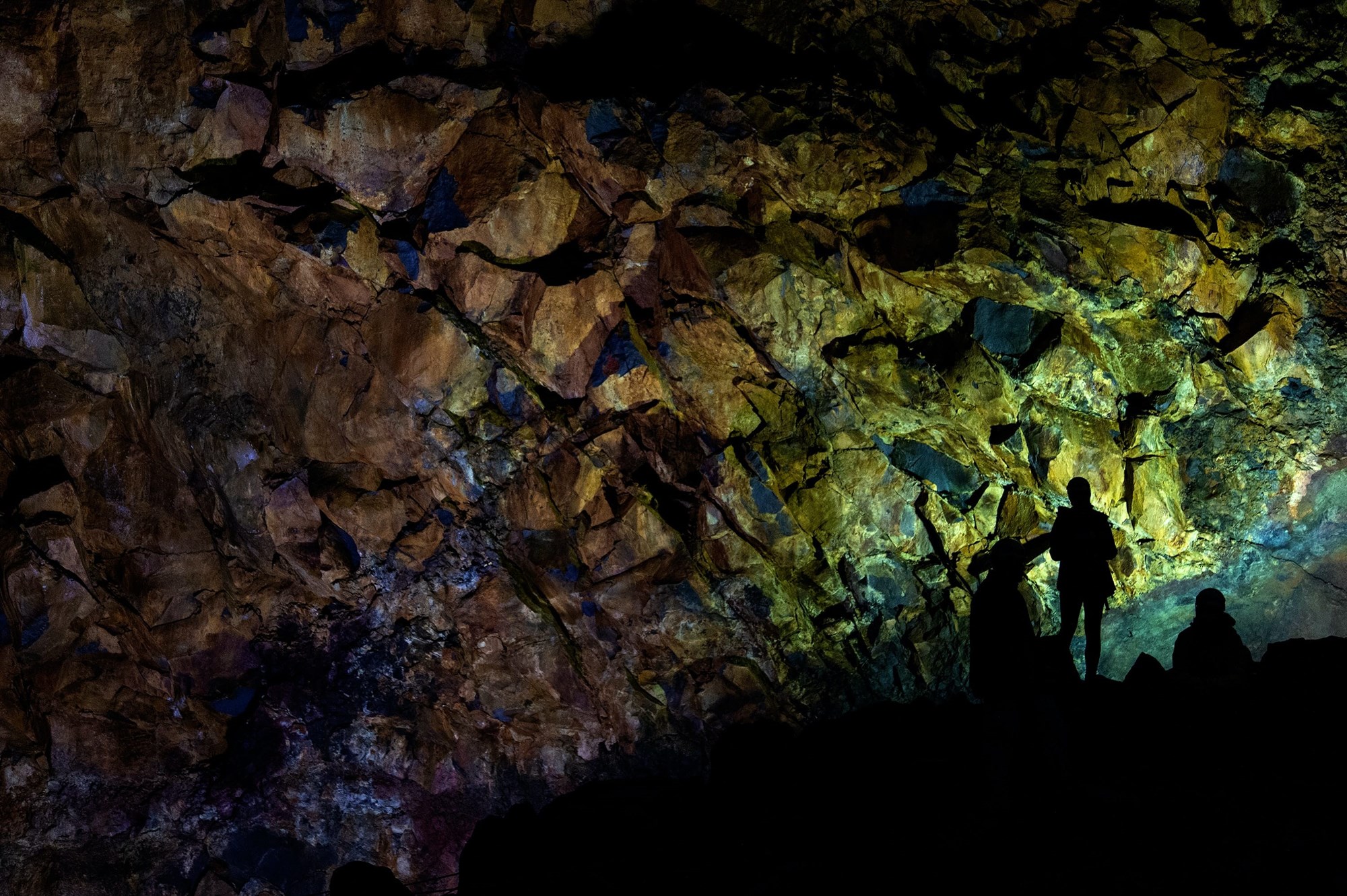
Location: Close to Reykjavik
Status: Dormant
Last eruption: around 2000 BC
If you’re looking for a once in a lifetime experience, then you have to visit the magma chamber at Þríhnúkagígur. This volcano is the only place on earth where you can experience the inside of a magma chamber, and because the enormous volcano has been dormant for thousands of years, it is perfectly safe to be explored.
Aside from its immense stature, an even more impressive feature of Þríhnúkagígur is the natural colouration of the inside of the volcano caused by the mineral rich walls that emit vibrant shades of red, yellow, and green.
Volcano tourism in Iceland
Since the eruption of Eyjafjallajokull in 2010, volcano tourism in Iceland has taken off. With news crews from around the world broadcasting the chaos caused by the ash cloud spewing out from Eyjafjallajokull, it acted as an advert for the beauty of Iceland’s landscape and inspired people from all corners of the globe to come and experience that very beauty for themselves.
Because of Iceland’s unique and wonderful volcanic and geological landscape including hot springs, caverns, geysers, and sheer cliff faces, it’s fair to say that volcanoes have become a pivotal reason for many people visiting the land of fire and ice.
How Iceland uses its volcanoes
In addition to the financial benefits that volcano tourism brings to Iceland, volcanoes are the unsung heroes in Iceland’s sustainable energy programme. Volcanic activity is used to heat nearly all of Iceland’s hot water supply, and is responsible for generating all of the nation’s electricity.
Pipes run directly from hot springs to people’s homes, making hot water easily accessible and highly affordable, as well as eco-friendly. Iceland’s impressive energy model means that the country operates on 100% renewable energy supplies, with no fossil fuels or toxic chemicals required to produce electricity.
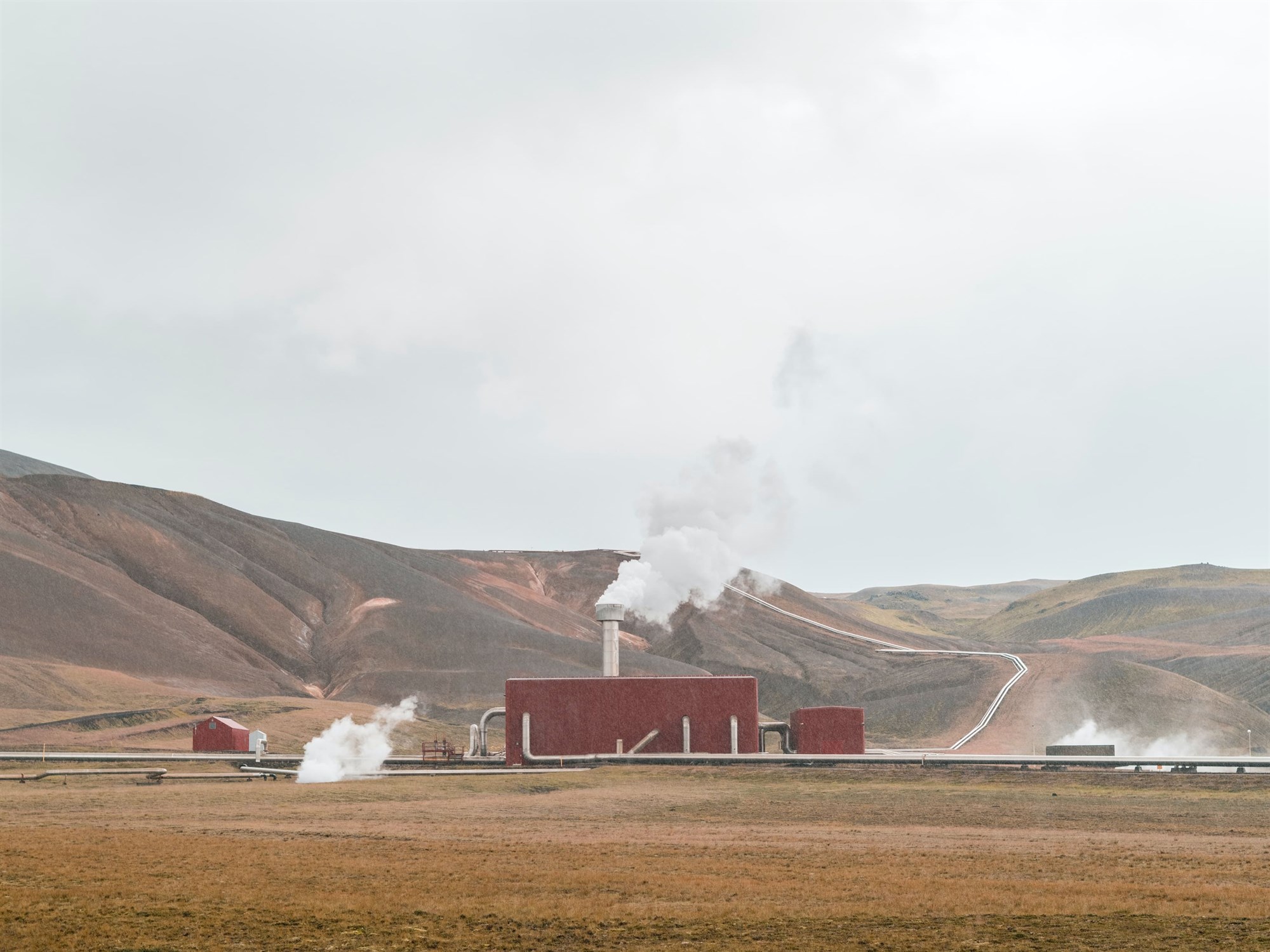
Geothermal energy is heat from the Earth that is harnessed and used as a source of energy to power things we use in our everyday lives. 30% of Iceland’s total electricity production is generated from geothermal power plants. In fact, the entire capital, Reykjavik, runs on geothermal energy.
The remaining 70% of Iceland’s energy is produced from hydroelectricity, another form of renewable energy, that is harnessed from running water. This makes Iceland one of the only countries on the planet that runs solely on renewable energy sources.
Visiting Iceland’s volcanoes
Visiting and exploring Iceland’s volcanoes and volcanic landscapes is one of the most breathtaking activities you can do in this stunning country, giving you a glimpse into what the Earth looked like in its infancy. Because of the variable nature of volcanic exploration experiences, ranging from walking along a lava sand beach or exploring a moss covered lava field, to hiking to the top of a spectacular crater, you won’t want to limit yourself to visiting just one volcano.
One of the best ways of exploring Iceland’s volcanoes is a self-drive tour where you can create your own itinerary and explore at your own pace. Lotus Car Rental provides a wide range of quality affordable rental cars in Iceland to suit every type of volcanic exploration road trip.
What is the biggest volcano in Iceland?
The gargantuan Öræfajökull in the South East is the tallest volcano in Iceland, standing at 2119m. The peak is named Hvannadalshnúkur and is a popular summit for experienced hikers, offering stunning panoramic views.
The hike is physically gruelling and requires resilience and plenty of hiking experience, but the reward once you get to the top makes the effort more than worthwhile.
Can you climb a volcano in Iceland?
Of course. Many of the volcanoes in Iceland are safe and relatively easy to climb, with each one offering visitors something unique both in terms of scenery and ambience.
Eldfell, also known as Fire Mountain, is a popular volcano for hiking in Heimaey on the Western Islands offering a relatively simple climb and stunning views due to the colour of the rust red chunks of lava that litter the landscape. Here, you will also find the famous Elephant Rock landmark that was created by the power of Eldfell.
Can you see flowing lava in Iceland?
Despite Iceland’s active geological nature, it is rare that visitors will have the chance to witness newly flowing lava, although it does happen in what are known as ‘tourist-friendly’ eruptions that allow locals and visitors alike to witness lava fountains in person safely.
Aside from tourist eruptions, visitors can visit one of the numerous museums in the country that can provide an in-depth insight into how volcanoes behave during an eruption. The Lava Centre in Hvolsvollur provides an immersive experience that simulates earthquakes and volcanic eruptions amongst other natural phenomena.
What impact does COVID-19 have on my chances of visiting a volcano in Iceland?
As of August 2021, some restrictions on travel into Iceland remain in place to help prevent the spread of COVID-19.
Thankfully for visitors, Iceland is open to visitors from a list of approved countries and has implemented rigorous testing procedures on the border to minimise risk and disruption for travellers.
Fully vaccinated or those with natural immunity can avoid a double screening and quarantine period by providing proof of a negative test taken before departure, and unvaccinated travellers must only quarantine for a short period of 5-6 days before being allowed to travel around the country.
Once you have satisfied border testing measures, you are free to explore Iceland’s volcanoes with no other restrictions currently in place, although everything continues to be sanitized to a high standard.
Despite there being no limits on excursions and tours for social distancing, popular tourist spots in Iceland including volcanoes are still seeing much lower numbers of visitors than usual.
Not only is this a benefit, allowing you to enjoy your experience in more peaceful surroundings, but it should also put your mind at ease if you are still concerned about maintaining a safe distance from others. If this is the case, we would recommend hiring a rental car and taking a self drive tour in order to minimise close contact with other travellers.
Read more about the latest information on how Iceland is continuing to safely welcome visitors during the COVID-19 pandemic and find out how here at Lotus Car Rental we are ensuring your safety when you book a rental car with us with our COVID-19 safety policy.